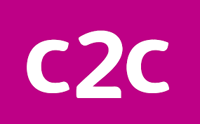Cost benefits of moving your database to the Oracle Cloud
More often than not, DSP are asked about migrating Database and Application infrastructure to the Cloud. Instead of buying hardware, paying for hosting and doing all the infrastructure project and operational work, they want to farm this out to a trusted partner to manage, so they can concentrate all their IT efforts on the business end of IT.
But how many IT leaders actually see the picture as to what savings could be had? And do they look just at their own budget, or at the company’s spend as a whole? As often headcount, compliance, power consumption, even desk space and training doesn’t affect an IT leader’s budget.
Savings from moving to the Cloud spill outside of IT, and it’s important for IT leaders to understand this when compiling a business case.
Most organisations have effective methods for identifying their costs. Information on personnel, capital and operational costs can be obtained from fiscal officers for a fair cost comparison.
Cost of staying ‘as-is’
It is important to include all costs associated with operating an internal Database and Application Infrastructure before the Cloud business benefits and extra capability is assessed and compared. Cost items to consider include:
• Labour including Benefits, NI, Sabbatical/Absentee cover
• Additional equipment and capital costs (in addition to the replacement of existing equipment)
• Additional Software costs including maintenance/updates, additional features and management tools
• Physical facilities – hosting costs, power/cooling
• Contracting Costs
Other cost considerations that may apply include
• Project and Contract Management
• Quality Assurance and Control
• Personnel Training
• Security, Maintenance and Compliance
Calculating Benefits
This is the most difficult part of justifying and costing a Database Cloud solution – as the benefits will differ from organisation to organisation. Some have compliance problems to solve; others have issues around keeping the lights on 24*7 with minimum downtime. “Internal” and “external” costs and benefits should be defined specific to your environment. Looking at just the bottom line cost will not suffice. The cost savings or competitive edge needs defining that are specific to your organisation.
Examples of internal benefits to be measured include:
• Savings from new Capabilities
• Decreased time in performing repetitive tasks
• Decreased training and support costs
• Improved regulatory compliance
• Reduced dependency on consultancies and contractors
• Increased uptime, availability and performance
• Elasticity – cost benefits of scaling up/down instead of costing for peaks
ROI - a Simple Study.
If you’re looking to review moving your Application and Databases into the cloud, this simple form below might be useful start to compare if Database and Applications in the ‘Cloud’ is actually worth it.
| Hardware/SW Refresh | Description | ||
| Servers Hardware | Physical Computers – If purchasing outright – spread the capital cost over 2 or 3 years | ||
| SAN and associated SW | SAN hardware including replication software, snapshot tools, | ||
| HW/SW Support and Maintenance | SAN and Server maintenance break/fix, software update support, Virtualisation Software, Operating Systems | ||
| Network Infrastructure | Switches, Routers Firewalls, Maintenance and 3rd party support | ||
| Backup Infrastructure | Tape drive, backup software (E.G. Backup Exec or NetBackup), Redundant systems | ||
| Backup Maintenance and Media | Tape media quantity, also offsite tape storage | ||
| Hosting Costs | Hosting at a Tier II or Tier III Datacentre | ||
| Cabinet | Physical cabinet, cables, sundries, KVM management | ||
| Power Draw/VA/Dual psu | Additional costs incurred for extra power consumption | ||
| Annual Hosting Fee | Annual fee for space/power/cooling | ||
| Remote Hands | Engineer to change tapes, reboots etc | ||
| Connectivity/Lease Line | Dedicated line from site to datacentre or VPN. Internet breakout, | ||
| Labour / Technical Resource | |||
| 3rd party contractor/consultancy costs | Including compliance such as ISO27001, infrastructure consulting, migration services, 3rd party management contracts | ||
| Technical Analyst Salary | Base Salary of internal technical resource | ||
| Database Administrator Salary | As above | ||
| Technical Training | Vendor certifications | ||
| 24*7 Cover | Do you need 24*7 availability? Then double or treble your internal technical resource to facilitate, factor in costs for shift and unsocial hours | ||
| Benefits | Pension, Holiday pay, | ||
| Employers NI Contribution (13.8%) | Employers legal contribution to the National Insurance fund | ||
| Absenteeism Cover (e.g. contractor cover for holidays) | Who covers for the team whilst they’re on holiday? Some where some how backfill will be required | ||
| HR, Management, Recruitment fees and expenses | Recruitment of perm staff results in recruitment fees (up to 20% of base salary) | ||
|
1 Year Cost |
3 Year Cost | ||
| TOTAL COSTS FOR IN-HOUSE INFRASTRUCTURE | £243,450.00 | £730,350.00 | |
| Database and Applications in the Cloud | |||
| Cloud Setup costs – including Migration, Project Planning, Documentation etc | £56,000.00 | £0.00 | |
| Cloud Fees - Annual | £120,000.00 | £360,000.00 | |
| Database and Cloud Managed Services | £35,000.00 | £105,000.00 | |
| TOTAL DATABASE AND APPLICATION CLOUD INFRASTRUCTURE (inc Setup) | £211,000.00 | £465,000.00 | |
| TOTAL SAVINGS OVER 1 AND 3 YEARS | £32,450.00 | £265,350.00 | |
Figures are fairly realistic of an organisation with several critical databases, with compliance and specific recovery requirements. The savings over 5 years can then become really significant, once data growth, Hardware refresh and additional power draw is taken into account.

.png?width=200&name=stripe-background-image_750x400%20(2).png)


